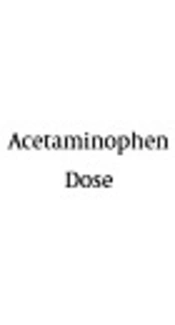Dear Editor,
Pain management is crucial in all patients. Three main drug categories that control pain are opiates, non-steroidal anti-inflammatory drugs (NSAIDs), and acetaminophen. Opiates can cause sedation and constipation; they may also predispose cirrhotic patients to hepatic encephalopathy, so they are not favored in cirrhotic patients (1). NSAIDs increase the risk of gastrointestinal bleeding and renal injury, additively they decrease diuretics’ efficacy in cirrhotic patients (2). A well-known fact that acetaminophen is metabolized in liver and liver impairment ensues from acetaminophen overdose, creats an assumption that acetaminophen is not safe in these patients (1). The aim of this letter was to discuss the safe dose of acetaminophen in cirrhotic patients.
Acetaminophen at dose of 1 gram per day, for periods as short as 5 days does not even alter the half-life of acetaminophen in patients with hepatic failure (3). It might be necessary to reduce the dose in patients with liver disease especially those who are malnourished or underweight (4). Some studies that have evaluated the safe dose of acetaminophen in cirrhotic patients concluded that acetaminophen 2 grams per day is safe, and does not correlate with hepatic decompensation (5). This dose is found safe even for long term administration (1). Admittedly, this dose is not considered toxic in patients who have decompensated liver cirrhosis (6). Patients with alcoholic cirrhosis can also take up to 3 grams of acetaminophen each day (7). Doses as high as 4 grams per day taken for more than 5 days have not shown any toxic effects in patients with chronic liver disease (8). When this dose is administered to those with stable cirrhosis, its safety has been shown even for 13 days (9). It can thus be concluded that, acetaminophen is safe in cirrhotic patients at a dose of 2 - 3 grams per day for long term; and for short duration even 4 grams can be administered safely.
